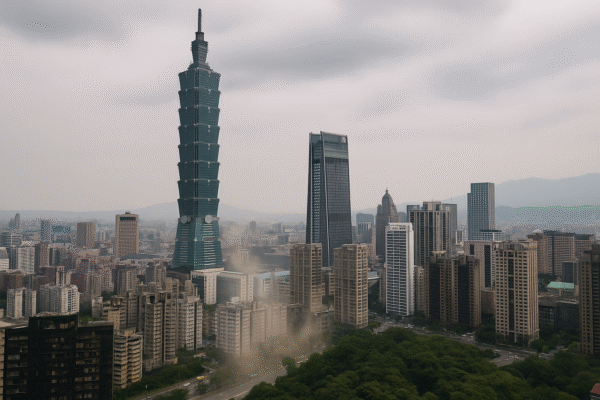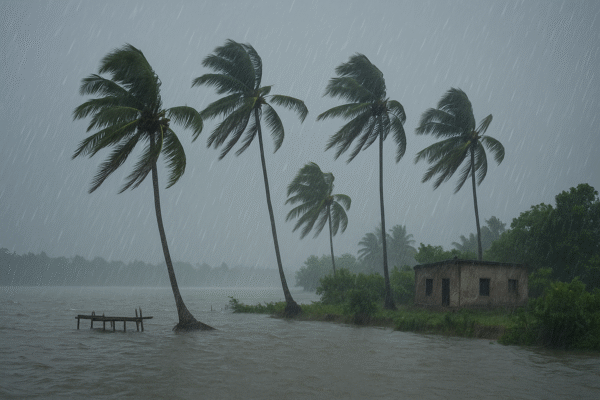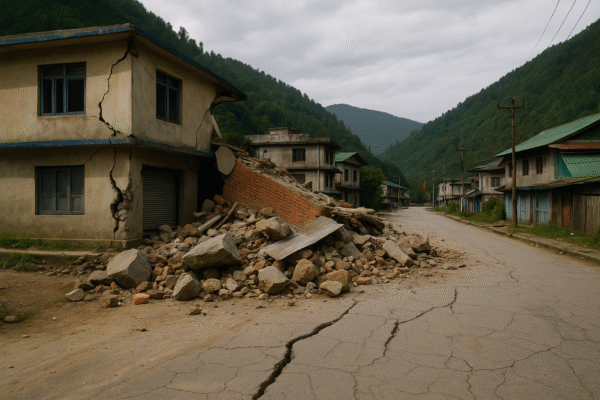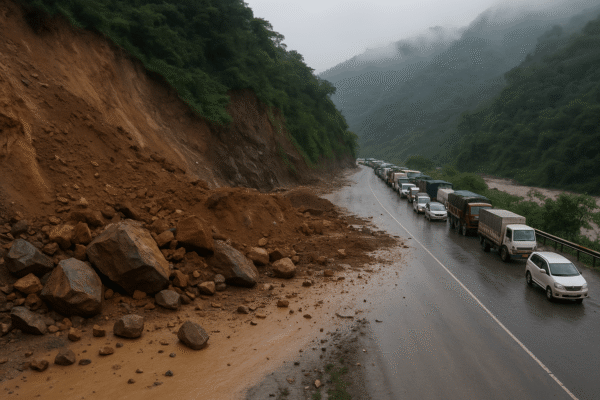The monsoon’s wrath has unleashed a travel crisis in the Himalayas as torrential rains and catastrophic landslides have shut down the vital Jammu–Srinagar Highway—one of the only all-weather links between Kashmir and the rest of India. With travel ground to a halt for four consecutive days, over 2,000 vehicles, from buses and trucks to private cars, now sit stranded across multiple points between Jammu and Udhampur.
Officials report the critical 270-kilometer route has been blocked by numerous landslides in the Udhampur–Ramban belt, particularly between Jakheni and Chenani. The uncontrolled slides have made passage impossible, shutting off connectivity for highways, railways, and villages alike.
In a stark illustration of disruption, traffic authorities have imposed a blanket ban on movement—from Nagrota to Reasi, Doda, Ramban, Banihal, and all the way to Srinagar. Commuters en route—including those from Katra and Udhampur—are being urged to carry official photo IDs to facilitate limited emergency movement when possible.
In a bid to restore connectivity, the Border Roads Organisation is deploying heavy machinery and manpower in round-the-clock clearance operations. Authorities anticipate possible partial reopening by the evening, though repeated terrain collapses continue to hamper progress.
Meanwhile, alternative routes remain limited. The Kishtwar–Sinthan–Anantnag corridor is also shut, while the historically significant Mughal Road is open but only for light vehicles under daylight hours and fair conditions. Travelers between Poonch and Shopian may use it between 7 AM and 6 PM once maintenance clearances are in place.
Beyond the highways, the monsoon assault has claimed dozens of lives. In the Vaishno Devi region, a landslide near the pilgrimage route tragically left more than 30 people dead and many injured, suspending all religious activity. Elsewhere, a catastrophic cloudburst in Chositi village of Kishtwar district resulted in a flash flood that killed over 65 people, left hundreds injured, and dozens missing—many of them pilgrims on the Machail Mata Yatra. Entire community kitchens, homes, and vehicles were swept away, and relief operations continue under arduous conditions.
The broader region is also witnessing flash floods in Doda and flooding of rivers like the Tawi, Chenab, and Jhelum. Amidst this, schools in Jammu—and even parts of Himachal Pradesh and Punjab—have been closed as precautionary measures due to flood risk and infrastructure damage.
To ease passenger plights, Northern Railways has launched a special unreserved train from Jammu to Delhi, with stops en route, to help stranded tourists and pilgrims. Rail services, however, remain heavily disrupted with dozens of trains canceled, short-terminated, or rerouted. At several stations—including Manwal, Sangar, and Gaghwal—local NGOs, station staff, and police are coordinating to provide stranded passengers with food, water, and shelter.
As essential services falter, the region braces for further monsoon onslaughts. The rainfall in Jammu alone has shattered records—registering its heaviest one-day deluge in decades. Riverbanks overflow, bridges and roadways cave in, electricity and telecom networks are down—essential lifelines wavering in the face of nature’s fury.
In response, the Jammu & Kashmir government has issued a public advisory: “Stay alert—the next two to three weeks are likely to remain critical.” Disaster response units, including state and national defence agencies, are in high alert, while relief efforts continue to mobilize humanitarian aid in the most vulnerable areas.
For tourists, pilgrims, and local commuters, this is a time for vigilance. Travel planners are urged to defer trips, monitor official updates via radio or government advisories, and only embark on journeys when confirmed safe routes are cleared. Meanwhile, rescue agencies and engineering teams race against time to restore connectivity, stabilize infrastructure, and safeguard lives in the fragile Himalayan corridor.
The monsoon’s ferocity has once again exposed the vulnerability of mountain terrain to nature’s extremes—but it has also brought the region’s resilience into sharp relief, as agencies unite to rebuild, rescue, and revive.
For more travel news like this, keep reading Global Travel Wire


















